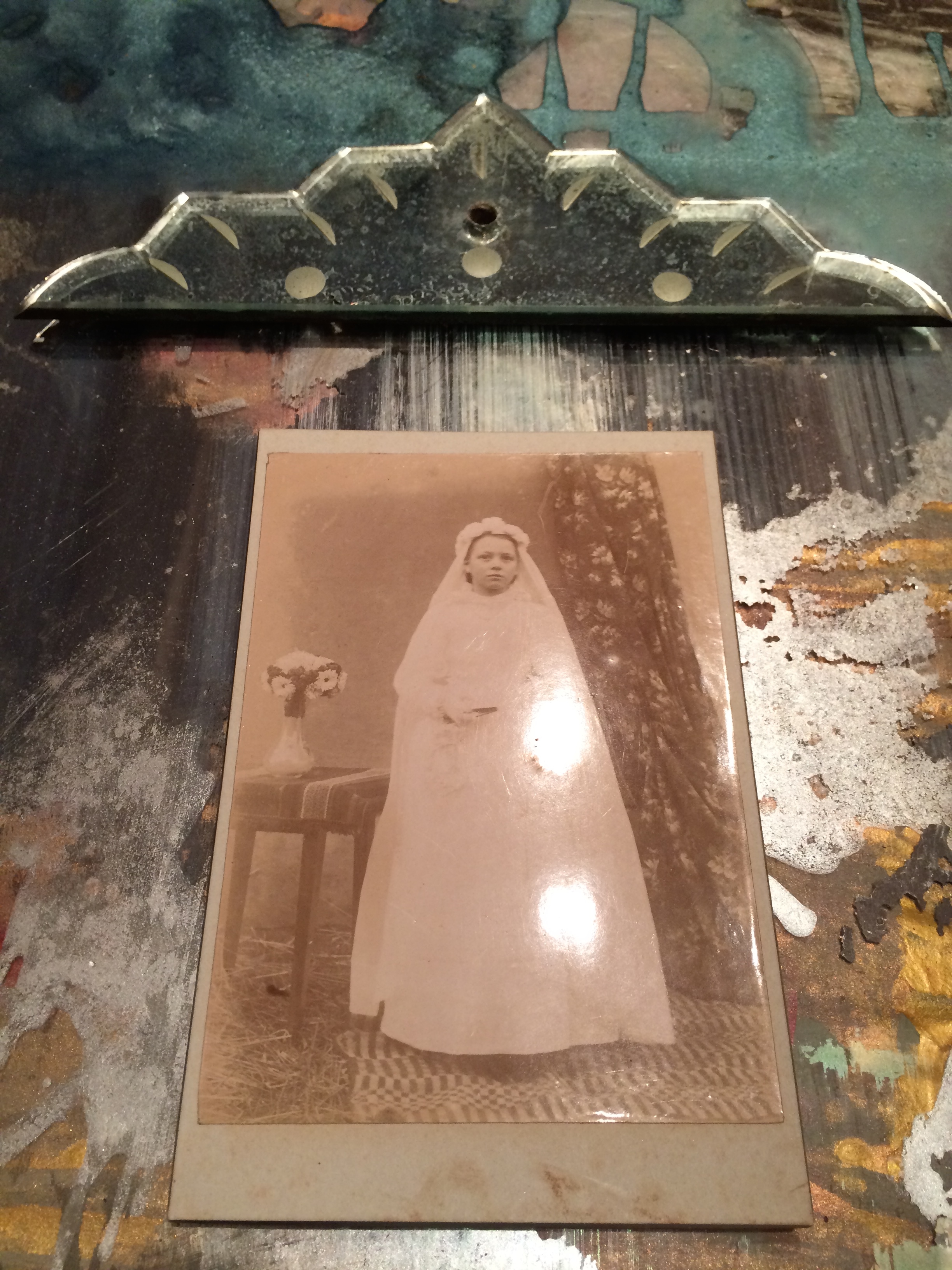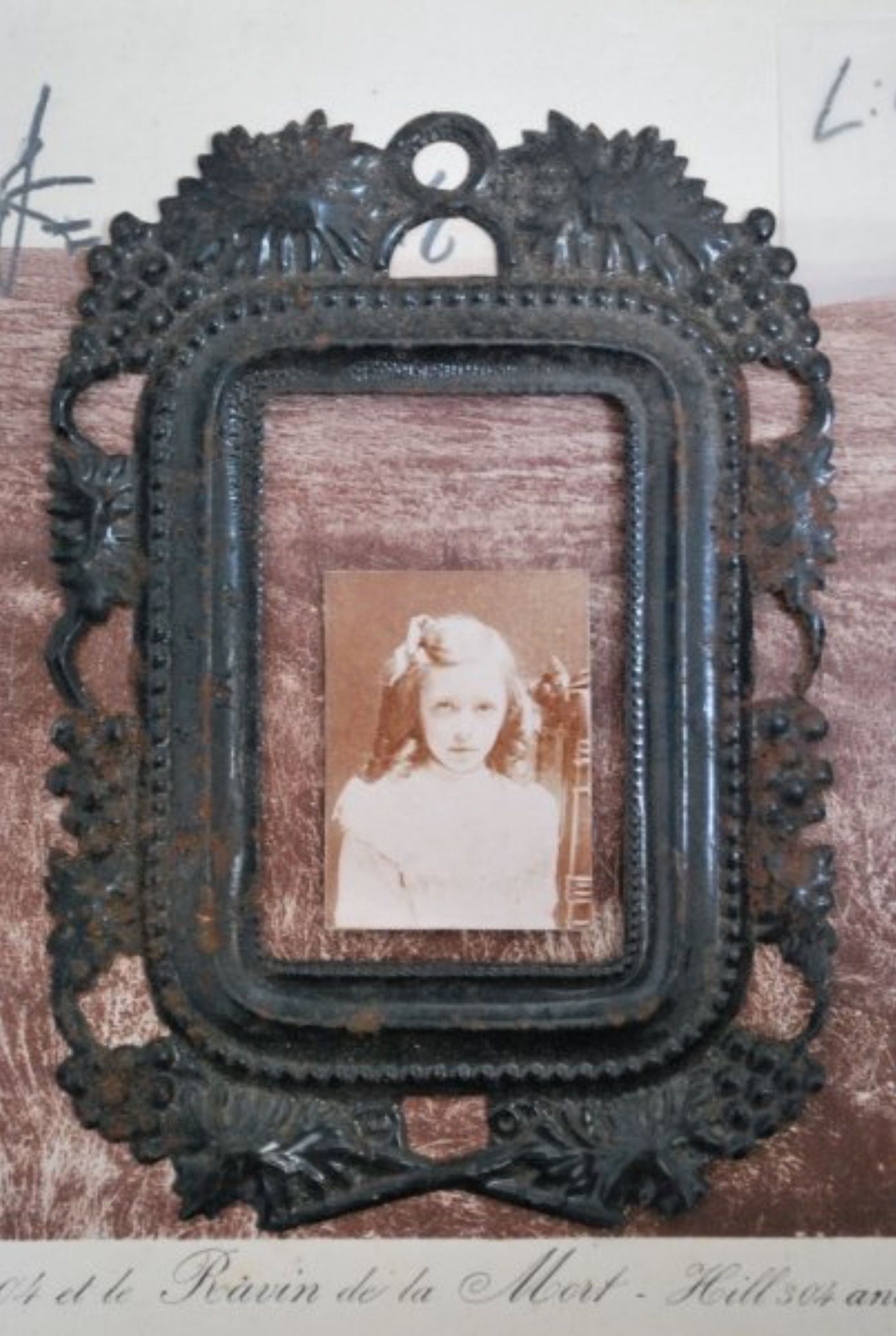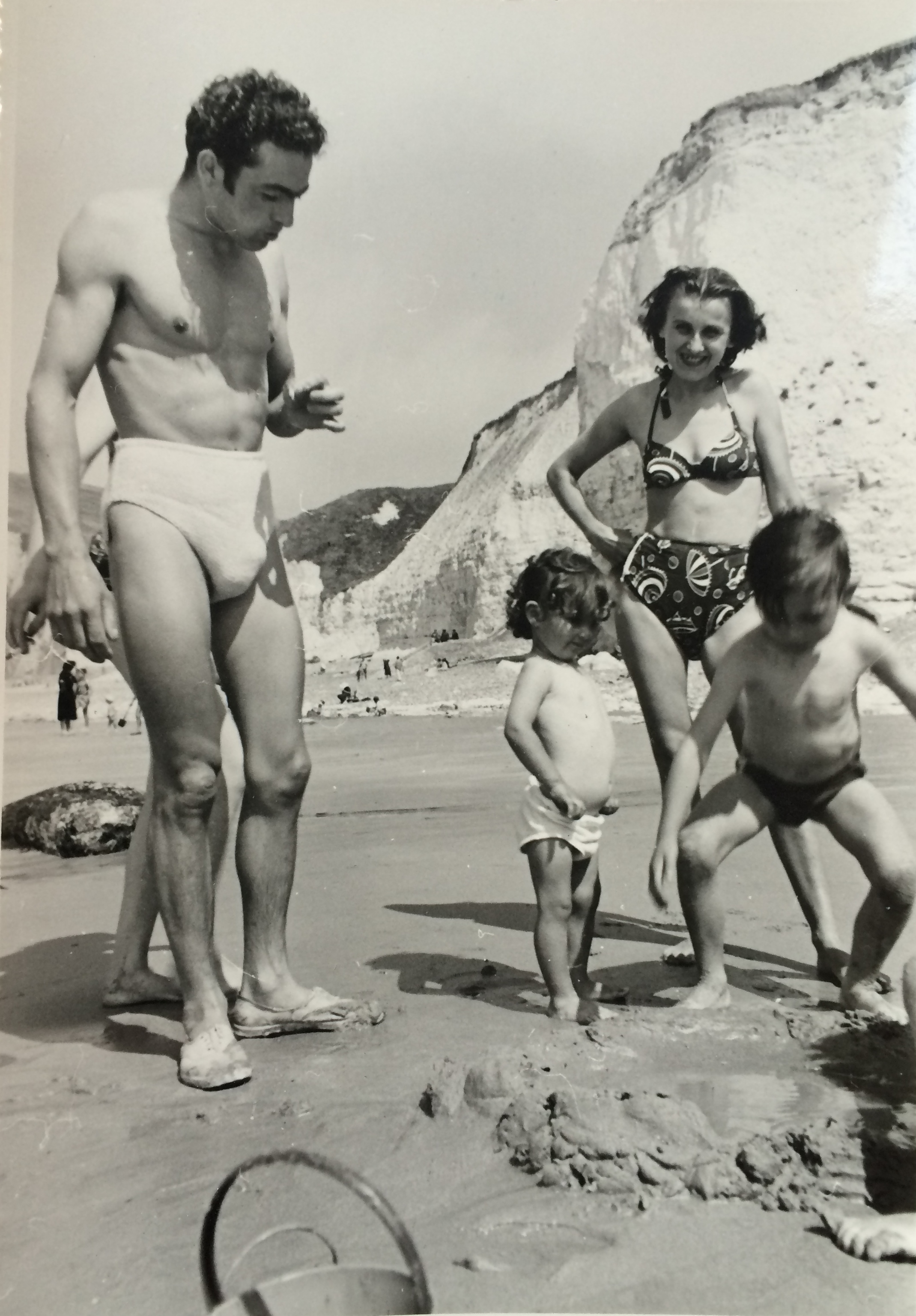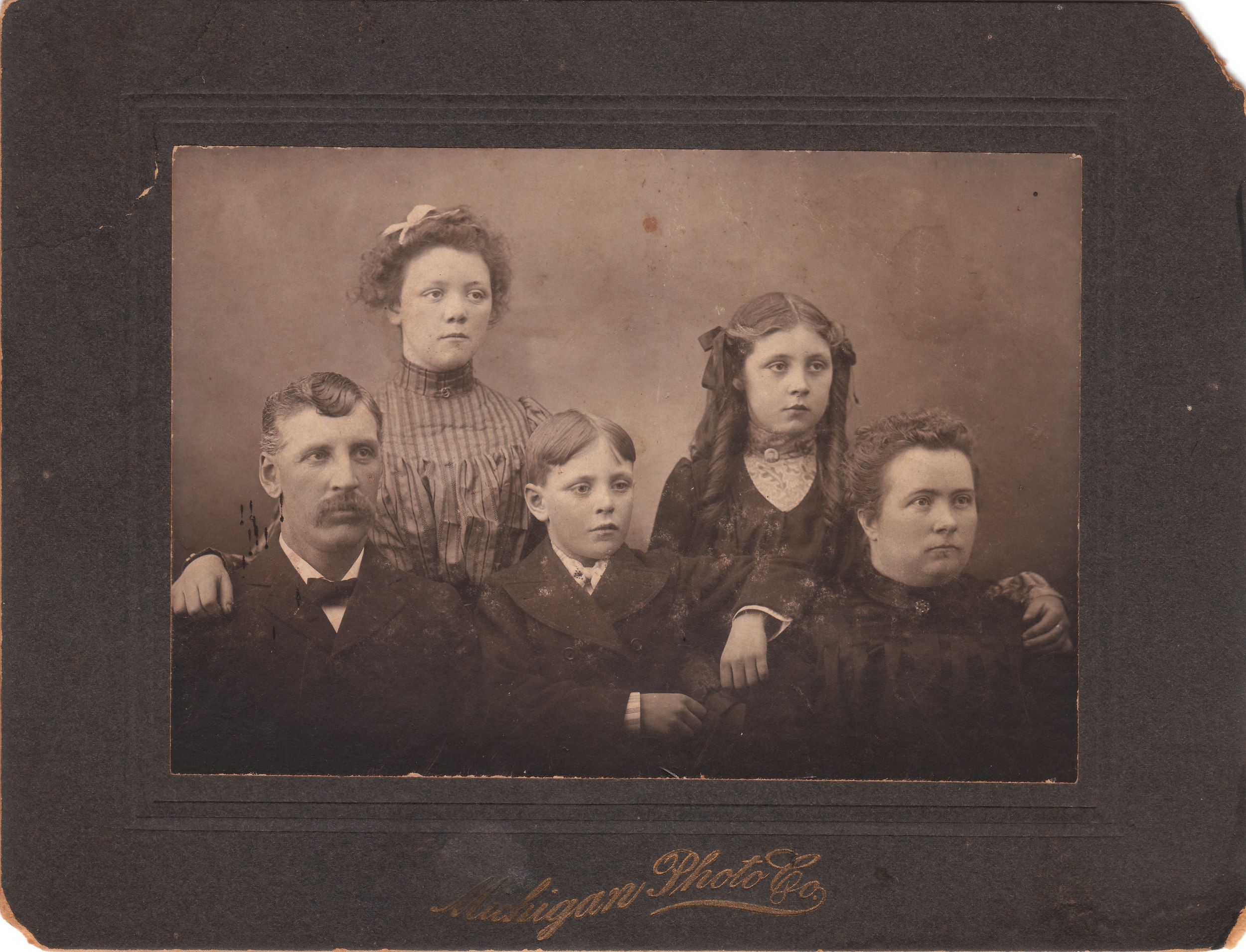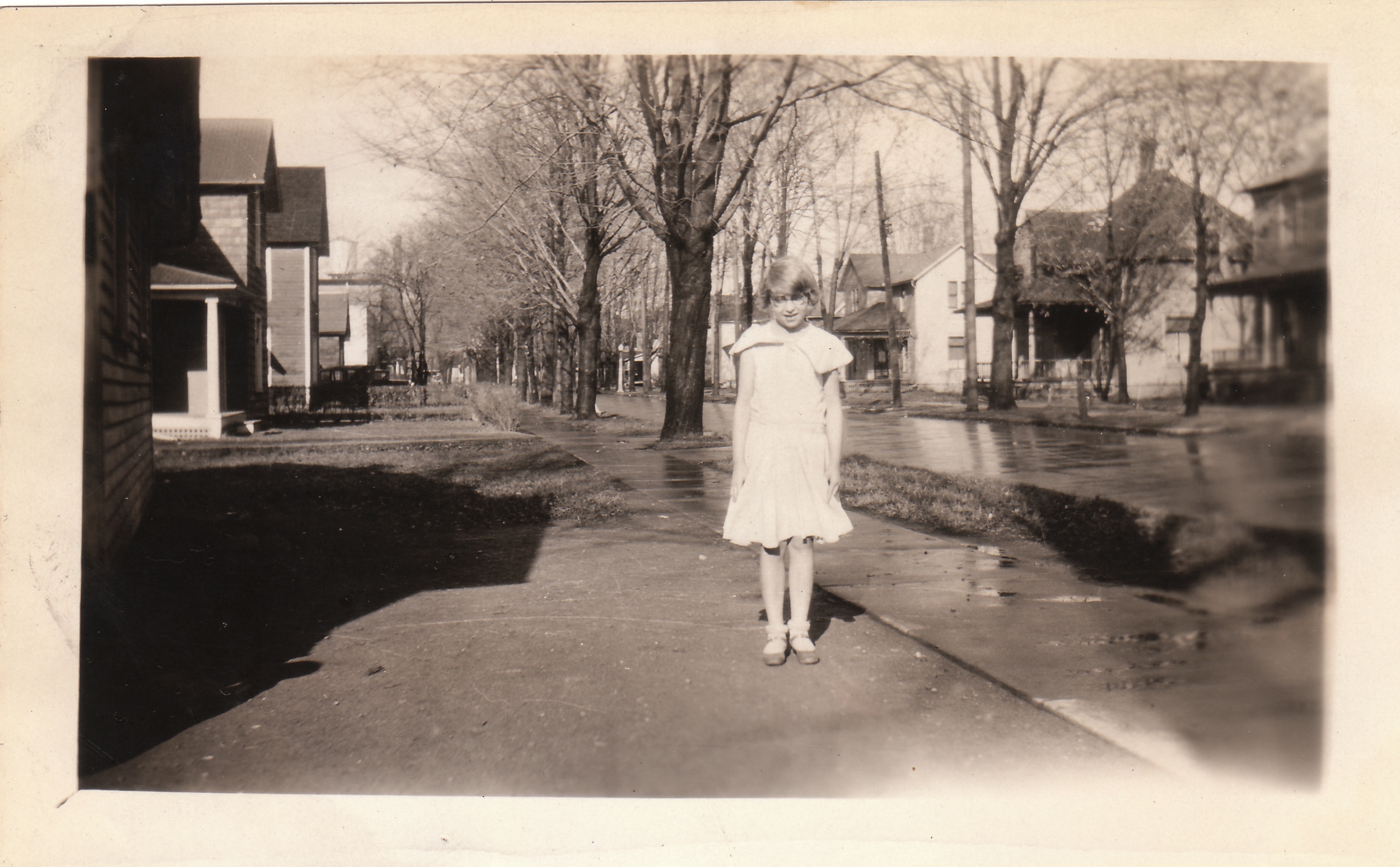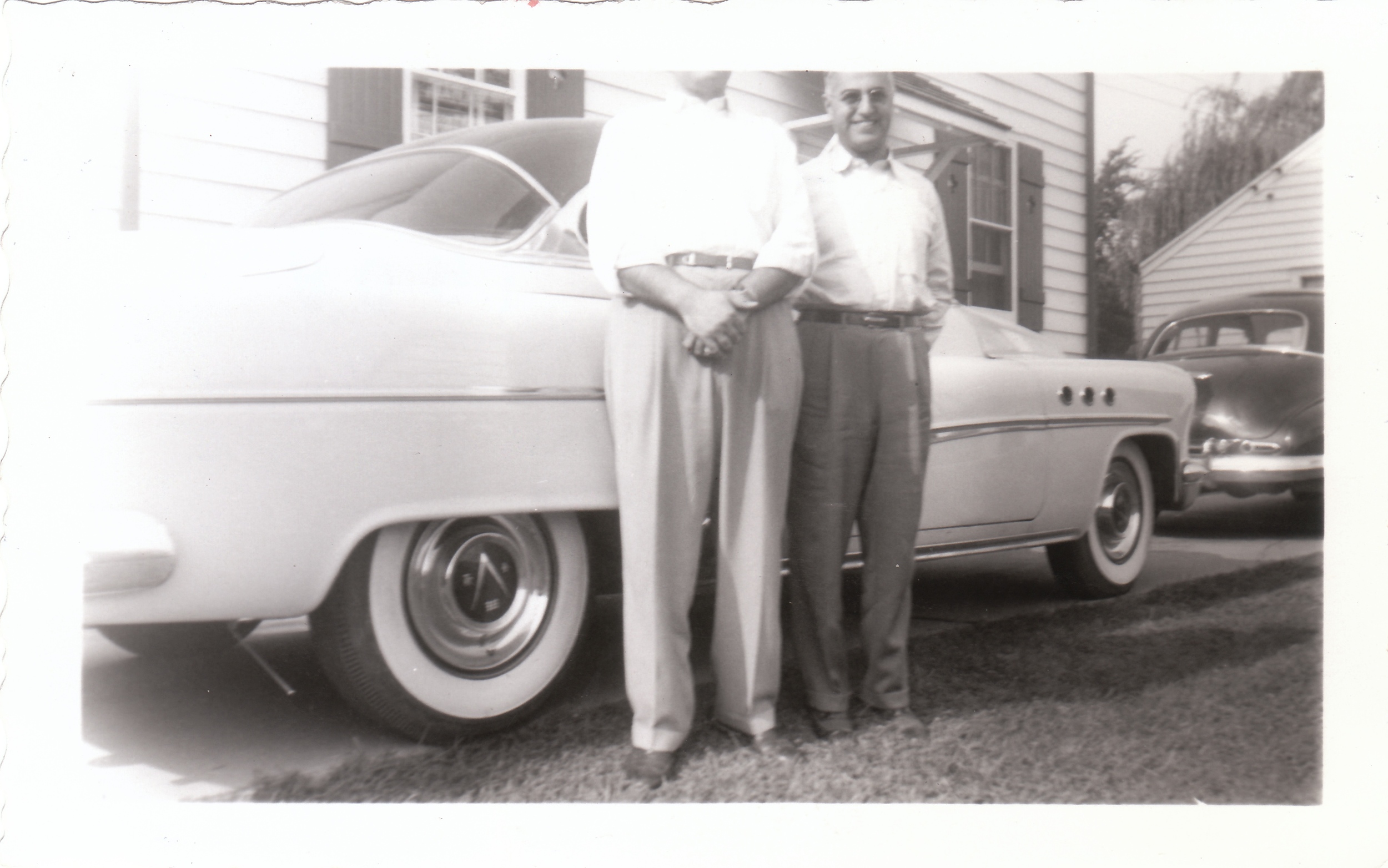Landers, California, credit and date in dispute. Provenance: Considered a hoax. Accordingly, El Disco obtained a 60's style Polaroid print from a Mr. Plowman, who claims to have obtained the photo directly from the photographer [unknown] while at the 1997 International UFO Congress in Laughlin Nevada. According to Mr. Plowman, "the photo is a gag relating back to the whole affair here and at Giant Rock down the road a while back in the 60's where some guy [George Van Tassel] who built the Integratron was wooing rich folks into the desert and charging large sums of money to bring them into contact with the UFO aliens around at the time."
Our Lady of Common Chicory
Our Lady of Common Chicory (Keeper of the Perennials)
Found photo with jigsaw and vellum cover, 32x25cm ; April 2015
Copyright © Tennyson Woodbridge, 1963 to present; collection Emmy Scharlatt
People I've Known: Western Dostoevsky
Benoit of Comberbach
Champion defender for The Great Lawsuit (1843), Benoit Woodbridge Comberbach (of Comberbach) would eventually pen By Order of Understanding in the late 19th century (a transformative legal doctrine better known as Clemency and Commiseration in the 20th century and simply, Druthers for Others, or how it is referred to today).
Benoit of Comberbach, 1872
2015, found tintype
Copyright © Tennyson Woodbridge, 1963 to present. All appropriation rights reserved
Digna
Digna, 1912
Found photograph, 2005
Copyright © Tennyson Woodbridge, 1963 to present. All appropriation rights reserved
Many Interacting Worlds: That Nature Sent to Me
Spencer Bewley (Keeper of the Loops)
Spencer Bewley (Keeper of the Loops)
Found Tintype, 2015
Copyright © Tennyson Woodbridge, 1963 to present. All appropriation rights reserved
The Family Crest Of Thomas Middleditch
Chiefly set in the hundred of Pimhill, Myddle Castle was built perhaps 1308, by Lord John Le Strange. The castle would ultimately collapse into ruin during the earthquake of 1688, but recognition of the Middleditch family crest would only grow. Spelling variations eventually included: Middle, Midel, Mittel, Mittle, Middler, Midlar and Thomas Middleditch.
The Family Crest of Thomas Middleditch
October, 2015; found tintype
Copyright © Tennyson Woodbridge, 1963 to present. All appropriation rights reserved
Saint Bernadette (Our Lady of Approved Apparitions)
Saint Bernadette (Our Lady of Approved Apparitions); Bernie_1871
Found Tintype, 2015
…our Lady of Approved Apparitions was awarded Time Capsule Status in 2003
Venez a Moi (Our Lady of Immeasurable Likeness)
But Not Forgotten
But Not Forgotten
Found photograph, digital assembly; 2014
Copyright © Tennyson Woodbridge, 1963 to present. All appropriation rights reserved
Our Lady of the Slump Blocks
Our Lady of the Slump Blocks (Keeper of the Hummocky Toe)
Acrylic + tintype and jigsaw on paper, 2015; 33x25cm
Copyright © Tennyson Woodbridge, 1963 to present. All appropriation rights reserved
Crossed His Heart and Hoped to Never Die
Crossed His Heart and Hoped to Never Die
Detail (Archibald Spires) with digital text; Avril 2015
Copyright © Tennyson Woodbridge, 1963 to present
Our Lady of French Buellton
Our Lady of French Buellton (or, the keeper of the birds)
Temporary painting, detail; Avril 2015
Copyright © Tennyson Woodbridge, 1963 to present. All appropriation rights reserved
Raven de la Mort
Raven de la Mort (detail)
Copyright © Tennyson Woodbridge, 1963 to present. All appropriation rights reserved
Raven de la Mort (Over there, beyond the hill, lies our Raven, still)
1908/2011, found photos, antique frame, graphite and vellum, ~25x60 cm
Copyright © Tennyson Woodbridge, 1963 to present. All appropriation rights reserved
Mer de Bulge
Ol’ Saginaw
Saginaw (part I)
Libby Corzine in 1947. Author, Men and their Mountains; and The Madness of Machines.
Saginaw_3, February 2015, found photo, 2.75 x 3"
M. Castleton’s Tin
His is the shock of being able to see into the future, seeing us gazing back at him and yet (frozen in tin) unable to engage.
We can look him over in a myriad of ways, even flip him over if we like, but M. Castleton cannot move, cannot even blink. We feel sorry for him. In a future near, our brains will be scanned in their entirety, all 100 billion neurons and 100 trillion connections, so that people in the further future (if we could recognize them as that), will be able to fully engage with our holographic avatar universe. In that sense, they will possess our "soul," our every thought and memory we one time held—yet without all the aches and pains, sunken dreams and sorrows. Our "soulmind," will operate perpetually in some petri dish, on a decorative computer chip in the bathroom by the foyer, or on a living room mantle like grandpa’s ashes—an endless tranquil think-tank, a digital universe—caught in our own uniquely familiar, infinite gaze.
This is what we see in the eyes of M. Castleton’s tin. Our children’s children will have children, and their children will feel sorry for us, up there above the mantle and caught suspended as we are, no longer evolving in perpetuity, as will be their custom. Soon enough in the future our avatar universe will not lie merely static, but will continue to flourish with thought and idea—in essence, will continue to “grow” mentally, forever after our corporeal existence has (or maybe hasn’t) passed.
This is what we’ll see in the eyes of M. Castleton’s tin. These are the nebulous thoughts he’ll hurdle forth through time and space. His perpetual deer-in-the-headlights vogue, as he once queried into a primitive soul-catching device, a camera contraption, an early memory gatherer. M. Castleton will be grasping, in one timeless moment, as the aperture dawned and a flash of light blasted, this unlikely if not unthinkable future was right there up in his grill—glaring him in the face.
M. Castleton’s Tin, 1906 - 2015
Found tintype, 2014 + collaborative written history (Jay Jurisich and Tennyson Woodbridge), 22 January, 2015.
M. Castleton’s Tin is a collaboration between Jay Jurisich and Tennyson Woodbridge and may be reproduced in part or in full, expressly or unexpressly for an open period of 75 years; after which point any use is strictly forbidden.
The Wake of Tara Belmont
The Wake of Tara Belmont
2015, found photographs, digital text
Copyright © Tennyson Woodbridge, 1963 to present. All appropriation rights reserved















